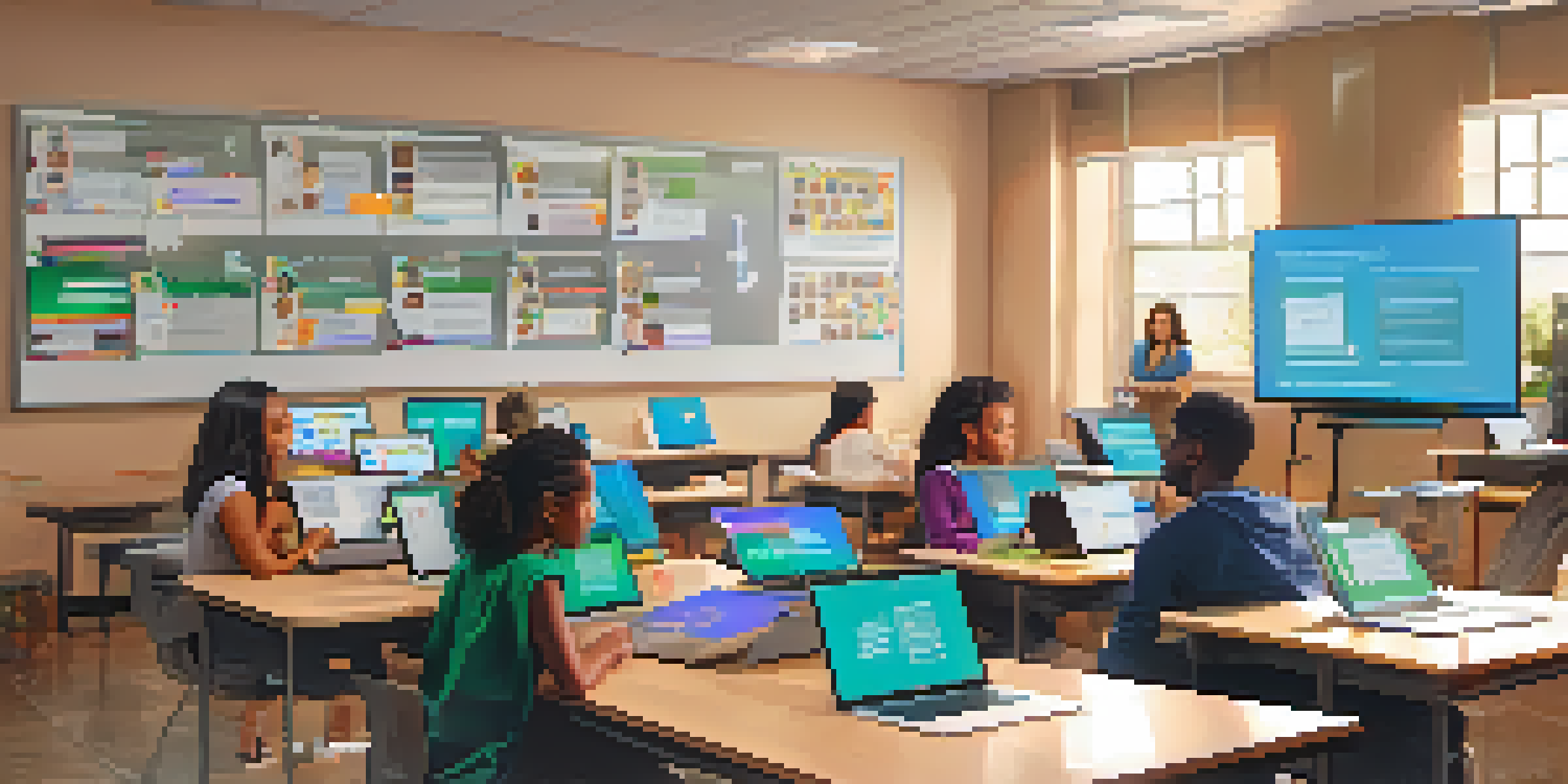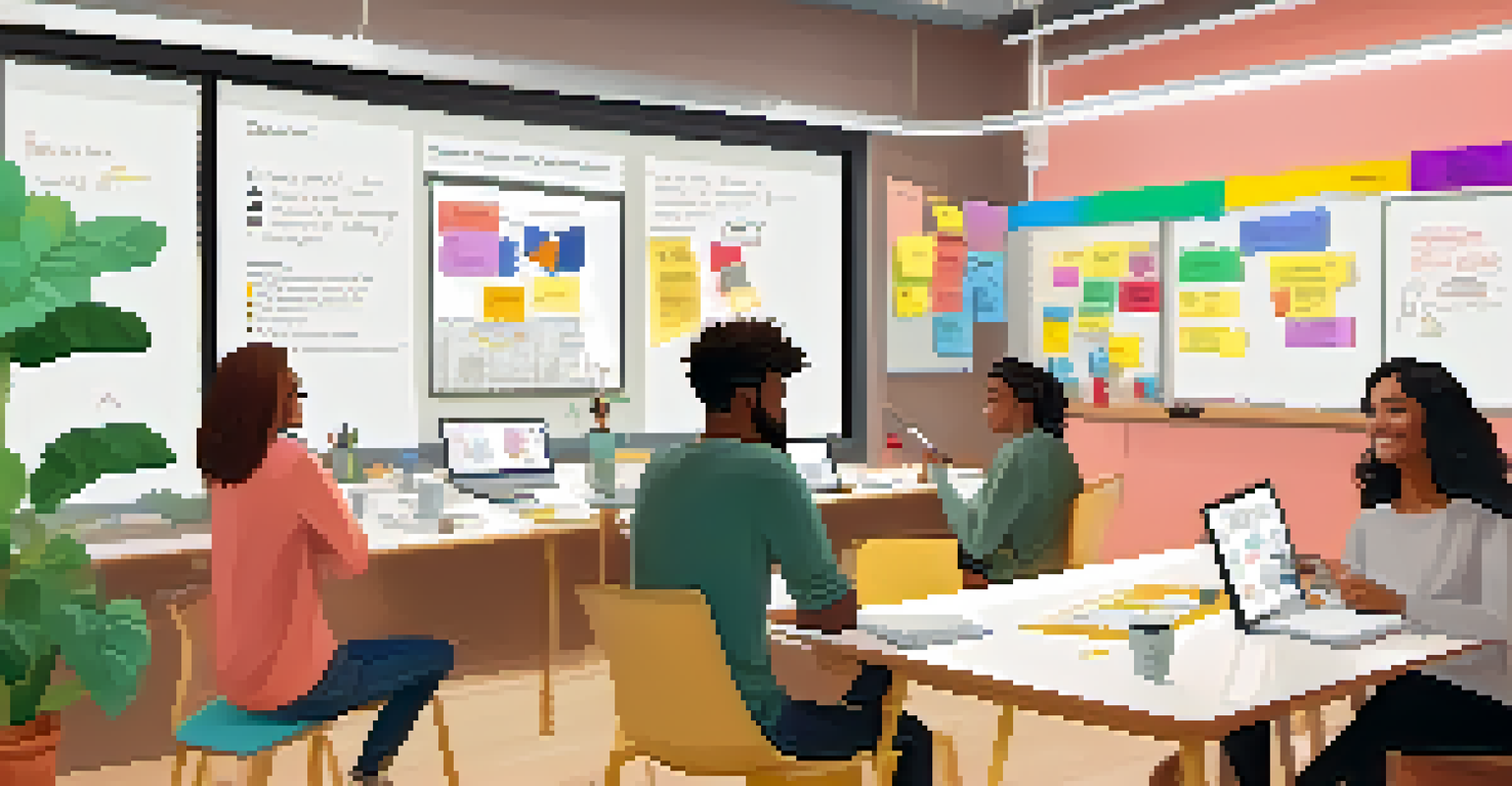Synchronous Learning Activities: Engaging Virtual Participants

Understanding Synchronous Learning: What It Is and Why It Matters
Synchronous learning refers to real-time online education where participants engage simultaneously. Imagine a virtual classroom where everyone is present, much like a traditional lecture but conducted over the internet. This approach fosters immediate interaction and feedback, making it a dynamic learning experience.
The best way to predict the future is to create it.
One of the key benefits of synchronous learning is the ability to build community among participants. Similar to group projects in school, these interactions can create relationships that enhance collaboration and knowledge sharing. The immediacy of communication helps learners feel connected, even from miles away.
Additionally, synchronous learning can significantly boost engagement through live discussions and Q&A sessions. These activities encourage students to participate actively rather than passively consuming information. When learners can ask questions in real time, they are more likely to retain what they’ve learned.
Key Elements of Engaging Synchronous Learning Activities
Engaging synchronous learning activities often involve a mix of discussions, group work, and interactive tools. Think of it as a recipe; the right combination of ingredients can lead to a delicious outcome. For instance, using breakout rooms can allow small groups to brainstorm ideas or solve problems together.

Another element is the incorporation of multimedia tools to enhance the learning experience. Videos, polls, and interactive slides can break up the monotony of a lecture and keep learners' attention. By integrating various formats, you cater to different learning styles, making the session more inclusive.
Real-Time Interaction Enhances Learning
Synchronous learning allows for immediate interaction and feedback, fostering a dynamic educational environment.
Finally, clear goals and a structured agenda are crucial. Just like a well-planned road trip, having a itinerary helps participants know what to expect and stay on track. This clarity not only enhances engagement but also ensures that learning objectives are met effectively.
Utilizing Technology to Enhance Synchronous Learning
Technology plays an essential role in facilitating synchronous learning activities. Platforms like Zoom and Microsoft Teams offer features like breakout rooms and polls, which can make sessions more interactive. Think of these platforms as the virtual equivalent of a classroom, equipped with all the necessary tools for a successful learning experience.
Education is not the filling of a pail, but the lighting of a fire.
Incorporating learning management systems (LMS) also streamlines the process of organizing content and tracking progress. These systems can provide a centralized location for resources, assignments, and assessments, making it easier for both instructors and students. Imagine having a digital binder where all your class materials are neatly organized and accessible.
Moreover, leveraging collaborative tools such as Google Docs or online whiteboards can encourage teamwork and creativity. These platforms allow participants to contribute in real-time, fostering a sense of community even in a virtual setting. By using technology effectively, you can create an engaging and collaborative learning environment.
Designing Interactive Activities for Virtual Engagement
To keep participants engaged, it’s essential to design interactive activities that promote active participation. For instance, icebreaker activities at the start of a session can help participants feel more comfortable. A simple question like 'What’s your favorite book?' can spark lively discussions and make the environment feel welcoming.
Another effective strategy is incorporating gamification elements, such as quizzes or competitions. Just as game nights bring friends together, these activities can energize your virtual classroom and motivate learners. Offering small prizes or recognitions can further incentivize participation and enthusiasm.
Engagement Boosts Retention
Incorporating interactive elements like discussions and quizzes keeps learners actively involved, improving information retention.
Lastly, encourage real-time feedback during the session. Tools like live polls or feedback forms can help gauge understanding and adjust the pace as needed. This responsiveness not only enhances engagement but also empowers learners by making them feel their opinions matter.
Fostering Community Through Collaborative Learning
Building a sense of community in a virtual environment is critical for learner engagement. Collaborative learning activities, such as group projects or peer reviews, can help participants connect on a deeper level. Consider it like a team sport where everyone plays a role, and success is dependent on teamwork.
Creating spaces for informal interactions, such as virtual coffee breaks or discussion boards, can also enhance community spirit. These opportunities allow participants to share experiences and ideas outside the structured learning time. Just like casual conversations in a physical classroom, these interactions can lead to lasting relationships.
Furthermore, establishing norms for communication and collaboration can set the tone for a supportive learning environment. Encouraging respect and open-mindedness among participants helps everyone feel valued. When learners feel safe to express themselves, engagement naturally increases.
The Role of the Instructor in Synchronous Learning
Instructors play a pivotal role in the success of synchronous learning activities. Their enthusiasm and energy can set the mood for the entire session, similar to a conductor leading an orchestra. A passionate instructor can inspire participants to engage and contribute actively.
Additionally, being responsive and approachable helps build rapport with learners. When instructors actively listen and address questions or concerns, it fosters a supportive atmosphere. This connection can significantly increase students’ motivation to participate.
Community Builds Collaborative Spirit
Creating opportunities for collaboration and informal interactions helps build a sense of community among participants.
Finally, instructors should be adept at facilitating discussions and managing diverse opinions. Like a skilled mediator, they can guide conversations in a way that encourages participation while maintaining respect among participants. This skill is crucial in ensuring that everyone has a voice during the learning experience.
Evaluating the Effectiveness of Synchronous Learning Activities
To improve future synchronous learning experiences, it’s important to evaluate their effectiveness. Gathering feedback through surveys or informal discussions can provide valuable insights into what worked well and what didn’t. Just as a restaurant values customer reviews, instructors can use this feedback to enhance their teaching strategies.
Additionally, assessing participant engagement through metrics, such as attendance and participation rates, can help gauge success. Analyzing these data points offers a clearer picture of how well learners are connecting with the material. Think of it like checking the health of a plant; indicators will show whether it’s thriving or needs adjustments.

Lastly, reflecting on the learning outcomes is essential. Comparing the objectives set at the beginning of the session with the actual outcomes can highlight areas for improvement. This reflective practice allows instructors to continuously refine their approach and create more engaging learning experiences.